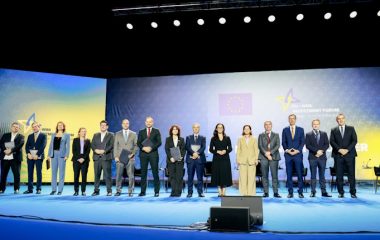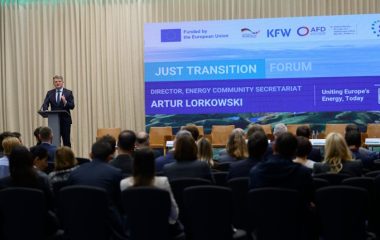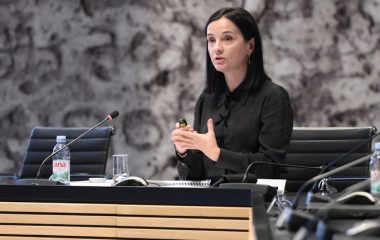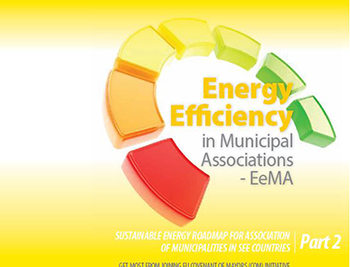
By Dubravka Bošnjak, GIZ Project Manager and Vesna Kolega, Energy Advisor
E-mail: bos.dubravka@gmail.com and vesna.kolega@gmail.com
Energy Efficiency in Municipal Associations – EeMA
The Energy efficiency in Municipal Associations (EeMA) project supports the cooperation between Associations of Municipalities (AoMs) from South-East European (SEE) countries. AoMs from Bosnia and Herzegovina, Montenegro, Serbia, Macedonia (FYR) and Kosovo*, have expressed their readiness and dedicated their efforts to strengthening their cooperation in the field of energy efficiency and renewable sources of energy. This also refers to their efforts to contribute to the reduction of energy consumption, increase of energy efficiency and reduction of carbon emissions.
The EeMA project is financed and supported by the German Federal Ministry for Economic Cooperation and Development (BMZ) and the Government of Switzerland, and it is implemented through the Open Regional Fund for Modernization of Municipal Services and Open Regional Fund for Energy Efficiency of the Deutsche Gesellschaft für Internationale Zusammenarbeit (GIZ).
Aim of the regional cooperation is exchange of knowledge and experiences relevant for the introduction of measures for improving energy efficiency and reduction of CO2 emissions in SEE. Promotion of energy efficiency measures and the investment of efforts in increasing public awareness on energy efficiency (EE), as well as joint appearance of AoMs at regional and international events, contributes to strengthening their role.
The purpose of the project is to provide support in the organisation of the network and it is implemented through four work packages:
- Development of roadmaps for creating and increasing capacities of local governments to develop and implement their energy efficiency strategies/policies;
- Establishment of a mentoring and Peer to Peer facility between AoMs and municipalities involved in planning or implementing Energy Action Plans;
- Development of pilot-projects for municipalities with AoMs support by utilizing practical experience for implementation of local policies based on a cost-optimization model; and
- Supporting policy dialogue between AoMs and central governments.
As the final result of the joint work of all project partners and through the use of a regionally developed common methodology, development of the Sustainable Energy Roadmap for Associations of Municipalities in SEE Countries was concluded. The document is composed of two parts. The first part focuses on challenges, barriers and benefits in the complex process of development of Sustainable Energy Municipalities (SEM) in SEE countries. The second is entirely dedicated to preconditions, requirements and advantages of joining the EU Covenant of Mayors (CoM) Initiative. The document also gives guidance on application of gender mainstreaming aspects in the energy efficiency sector.
Part 1
Challenges, barriers and benefits in the complex process of development of sustainable energy municipalities in SEE countries
Roadmaps and strategies are very often intended to guide implementation of changes, requiring support of all parties involved. The Sustainable Energy Roadmap for Associations of Municipalities in SEE Countries is a specialized type of strategic plan outlining activities that AoMs in SEE countries (Figure 1) can undertake in order to proactively support the development of Sustainable Energy Municipalities.
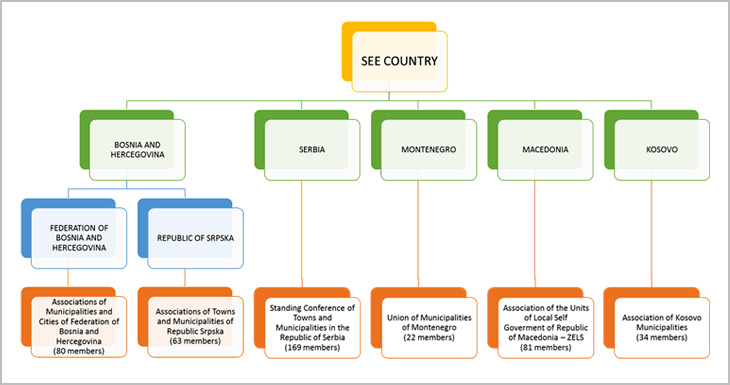
Figure 1: AoMs in SEE Countries
The Vision behind the Roadmap is development of sustainable energy local governance in SEE. This sustainability aspect also refers to the application of the Gender Equality (GE) principle understood and conveyed as paving the way to a sustainable better future. It is therefore one of the key values on which this Roadmap rests.
The Mission of the Roadmap is to provide clearer understanding of the local and regional context of the energy efficiency sector, as well as of the successful tools for developing SEM in SEE countries, based on EE, Renewable Energy Sources (RES) and environmental protection as imperatives of the 21st century.
There is a wide array of benefits that can be achieved as a result of fostering sustainable energy development of SEE municipalities. Some are tangible and readily quantifiable, while other are less so and it may be difficult to assign them a monetary value. Such are social cohesion and the sense of civic pride that comes with living in a green, successful and sustainable municipality. This, however, does not make these benefits less important in the context of development and sustainability.

Figure 2: Benefits of Sustainable Energy Development in SEE Municipalities
Along with benefits come barriers and challenges facing sustainable energy development. Therefore it is crucial to assess the particular barriers affecting the sustainable energy progress in SEE countries. Actions to overcome these barriers should be tailor-made for different stakeholders. Accordingly, the policy mix will need to encompass a range of measures that, collectively address all interested parties (AoMs, Municipal Administrations, local authorities, State authorities, investors, owners, developers, etc.). This issue is thus suitably covered by the Roadmap.
The success of the implementation of recommendations from the Roadmap depends heavily on a coordinated commitment by a wide body of stakeholders responsible for its delivery, extending well beyond the traditional energy community. To ensure that these stakeholders make the necessary commitment, it is important that they, early on, gain an understanding of their own roles and opportunities.
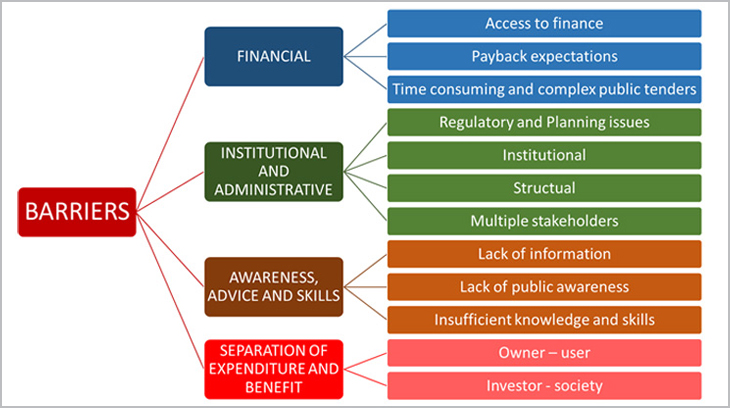
Figure 3: Barriers for SEM in SEE Countries
Part 2
Preconditions, requirements and advantages of joining the EU Covenant of Mayors (CoM) Initiative
Following the adoption of the EU Climate and Energy Package (2008), the European Commission (EC) took the unprecedented decision to directly involve local and regional decision-makers in the achievement of EU objectives. The local governments play a crucial role in mitigating the effects of climate change, all the more so when considering that 80% of energy consumption and CO2 emissions are associated with urban activity. After the adoption of the Climate Package, the EC launched the CoM to endorse and support the efforts deployed by local authorities in the implementation of sustainable energy policies.
CoM is a mainstream EU initiative uniting local and regional authorities in a common commitment to improve the quality of life of citizens by contributing to the European Community’s “3×20” climate and energy objectives.
These are:
- A reduction in EU greenhouse gas emissions of at least 20% below 1990 levels;
- 20% of EU energy consumption to come from renewable resources;
- A 20% reduction in primary energy use compared with projected levels, to be achieved by improving energy efficiency.
Signatories officially commit to submitting, within a year of joining the Initiative, a Sustainable Energy Action Plan (SEAP) in which they outline in concrete measures how they intend to reach the objectives. By joining the CoM on one side and creating Sustainable Energy Action Plans (SEAP) on the other, communities commit to base their sustainable energy development on renewable energy utilisation, energy efficiency measures and environmental protection.
By February 2016, the Covenant of Mayors was signed by 6.761 cities (number of inhabitants – 211.039.231). The interest of other cities to join the Covenant is extremely high. It is interesting to note that the Initiative spread beyond European borders and became global.
The general role of Associations of Municipalities within the CoM Initiative is to support its municipalities in several ways, i.e. by joining the CoM, finding high quality SEAP developers or supporting municipalities to develop SEAPs on their own, establishing CoM organisational structure in the municipalities, building SEM, implementing EE measures, projects and programs in public buildings owned or rented by the municipalities, implementing EE measures, projects and programs aimed at increasing energy and environmental efficiency in the city public transport sector, implementing EE measures, projects and programmes in the city public lighting sector, planning of city development based on the principle of energy-environmental sustainability, implementing continuous activities and campaigns in order to raise the awareness of citizens on the necessity of saving energy, always taking into account gender mainstreaming.
Actions that should be taken aiming at establishing SEM are divided into six main categories: strategic, legislative and regulatory, technical, fiscal/financial, communication/capacity building and research and development.
The final finding of the Roadmap is the definition of steps every municipality should undertake to become a SMART municipality in which process they will be supported by Associations of Municipalities.

Figure 4: Best Ways to Develop a SMART SEE Municipality
Roadmaps can be found at web pages of partners associations (English and local versions)
- Association of Kosovo* Municipalities: Publikimet nga AKKAsociacioni i Komunave të Kosovës
- Association of Cities and Municipalities FBIH: http://www.sogfbih.ba/index.php?lang=ba&sel=56
- Association of Cities and Municipalities RS: http://www.alvrs.com/v1/index.php/sr/usluge/usluge-savjetovanja-iz-energetske-efikasnosti
- Union of Municipalities of Montenegro: http://www.uom.co.me/?cat=7
- The Union of Local Self-Governments (ZELS): http://www.zels.org.mk/Default.aspx?id=258715f0-12cc-4dc1-b56a-fe5c2b6196e8
- The Standing Conference of Towns and Municipalities – National Association of Local Authorities in Serbia: http://www.skgo.org/projects/front/Projekti






